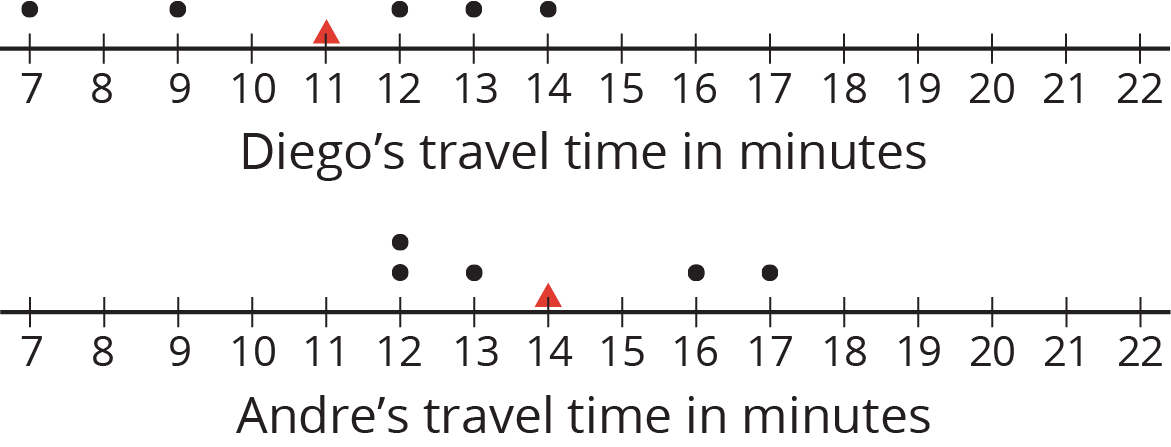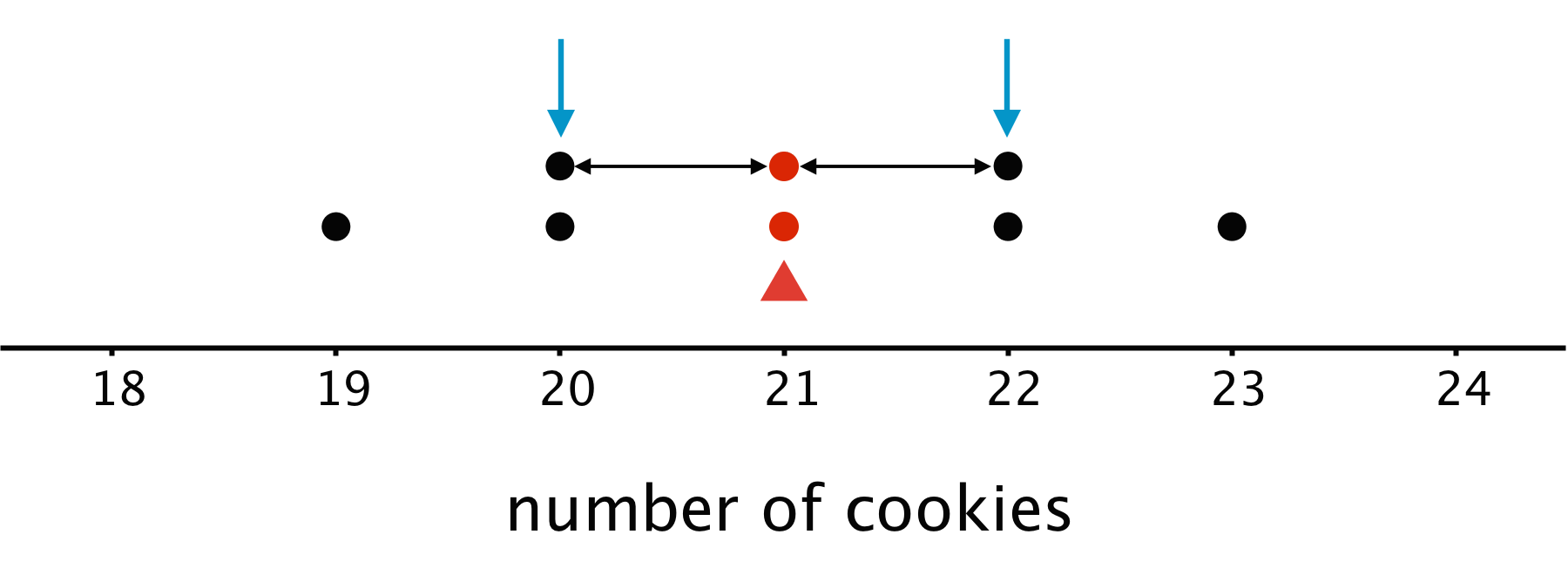10.1: Which One Doesn’t Belong: Division
Which expression does not belong? Be prepared to explain your reasoning.
\frac {8+8+4+4}{4}
\frac {10+10+4}{4}
\frac {9+9+5+5}{4}
\frac {6+6+6+6+6}{5}
Let's look at another way to understand the mean of a data set.
Which expression does not belong? Be prepared to explain your reasoning.
\frac {8+8+4+4}{4}
\frac {10+10+4}{4}
\frac {9+9+5+5}{4}
\frac {6+6+6+6+6}{5}
Here is the data set from an earlier lesson showing how long it takes for Diego to walk to school, in minutes, over 5 days. The mean number of minutes was 11.
| 12 | 7 | 13 | 9 | 14 |
The mean can also be seen a measure of center that balances the points in a data set. If we find the distance between every point and the mean, add the distances on each side of the mean, and compare the two sums, we can see this balancing.
Record the distance between each point and 11 and its location relative to 11.
| time in minutes | distance from 11 | left of 11 or right of 11? | |
|---|---|---|---|
| row 1 | 12 | ||
| row 2 | 7 | ||
| row 3 | 13 | ||
| row 4 | 9 | ||
| row 5 | 14 |
Sum of distances left of 11:___________ Sum of distances right of 11:___________
What do you notice about the two sums?
Let’s investigate whether 10 can produce similar sums as those of 11.
| time in minutes | distance from 10 | left of 10 or right of 10? | |
|---|---|---|---|
| row 1 | 12 | ||
| row 2 | 7 | ||
| row 3 | 13 | ||
| row 4 | 9 | ||
| row 5 | 14 |
Sum of distances left of 10:___________ Sum of distances right of 10:___________
What do you notice about the two sums?
Here are dot plots showing how long Diego’s trips to school took in minutes—which you studied earlier—and how long Andre’s trips to school took in minutes. The dot plots include the means for each data set, marked by triangles.

Here is a dot plot showing lengths of Lin’s trips to school.

| time in minutes | distance from the mean | left or right of the mean? | |
|---|---|---|---|
| row 1 | 22 | ||
| row 2 | 18 | ||
| row 3 | 11 | ||
| row 4 | 8 | ||
| row 5 | 11 |
Why is this a good way to think about the mean? Let’s look at a very simple set of data on the number of cookies that each of eight friends baked, shown in the table and dot plot.
| 19 | 20 | 20 | 21 | 21 | 22 | 22 | 23 |

The distribution shown is completely symmetrical. The mean number of cookies is 21, because (19+20+20+21+21+22+22+23)\div8=21. If we mark the location of the mean on the dot plot, we can see that the data points could balance at 21.
In this plot, each point on either side of the mean has a mirror image. For example, the two points at 20 and the two at 22 are the same distance from 21, but each pair is located on either side of 21. We can think of them as balancing each other around 21.

Similarly, the points at 19 and 23 are the same distance from 21 but are on either side of it. They, too, can be seen as balancing each other around 21.

We can say that the distribution of the cookies has a center at 21 because that is its balance point, and that the eight friends, on average, baked 21 cookies.
Even when a distribution is not completely symmetrical, the distances of values below the mean, on the whole, balance the distances of values above the mean.
A measure of center for a data distribution is a number that can be thought of as the middle or typical value of the distribution.